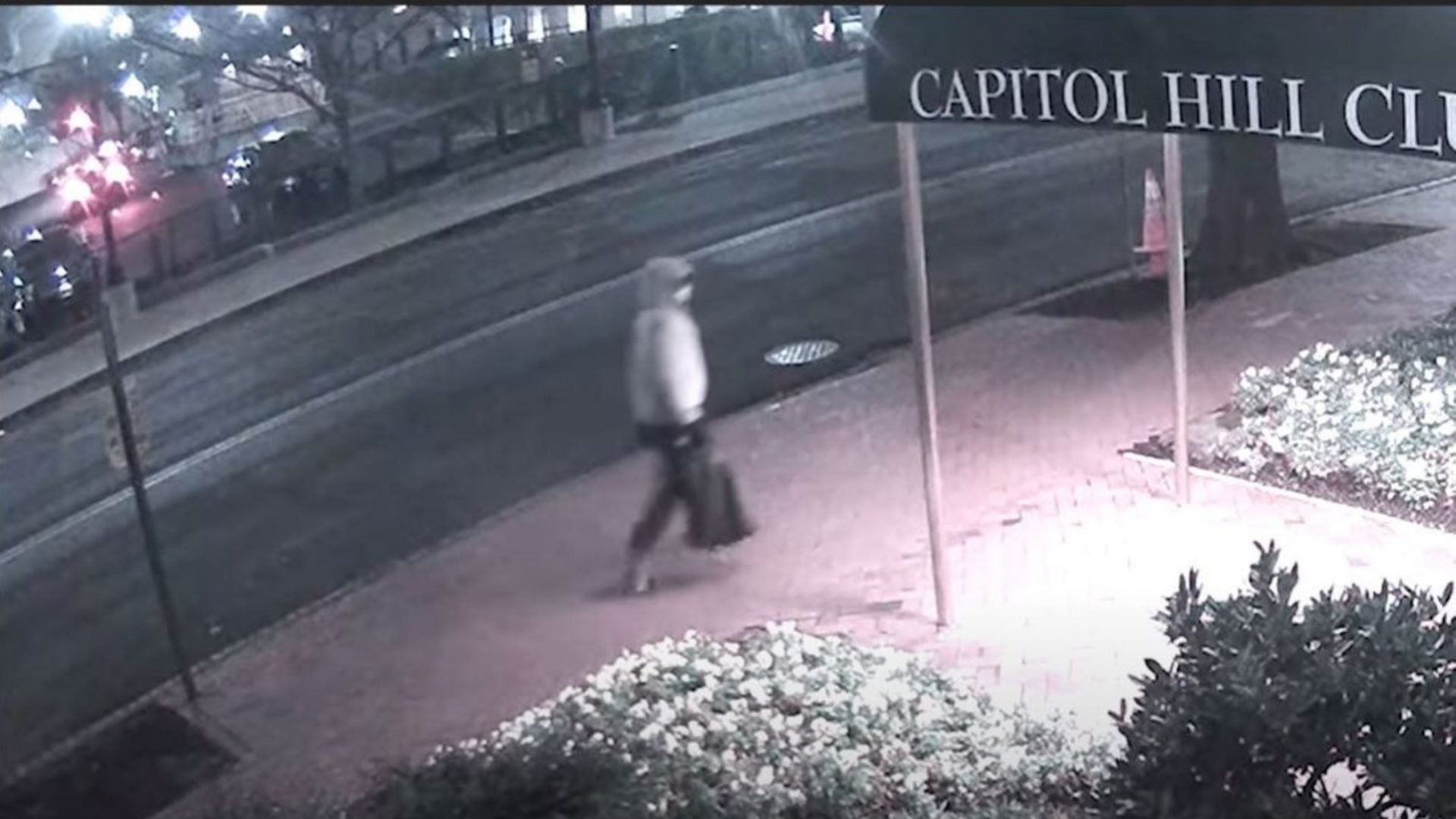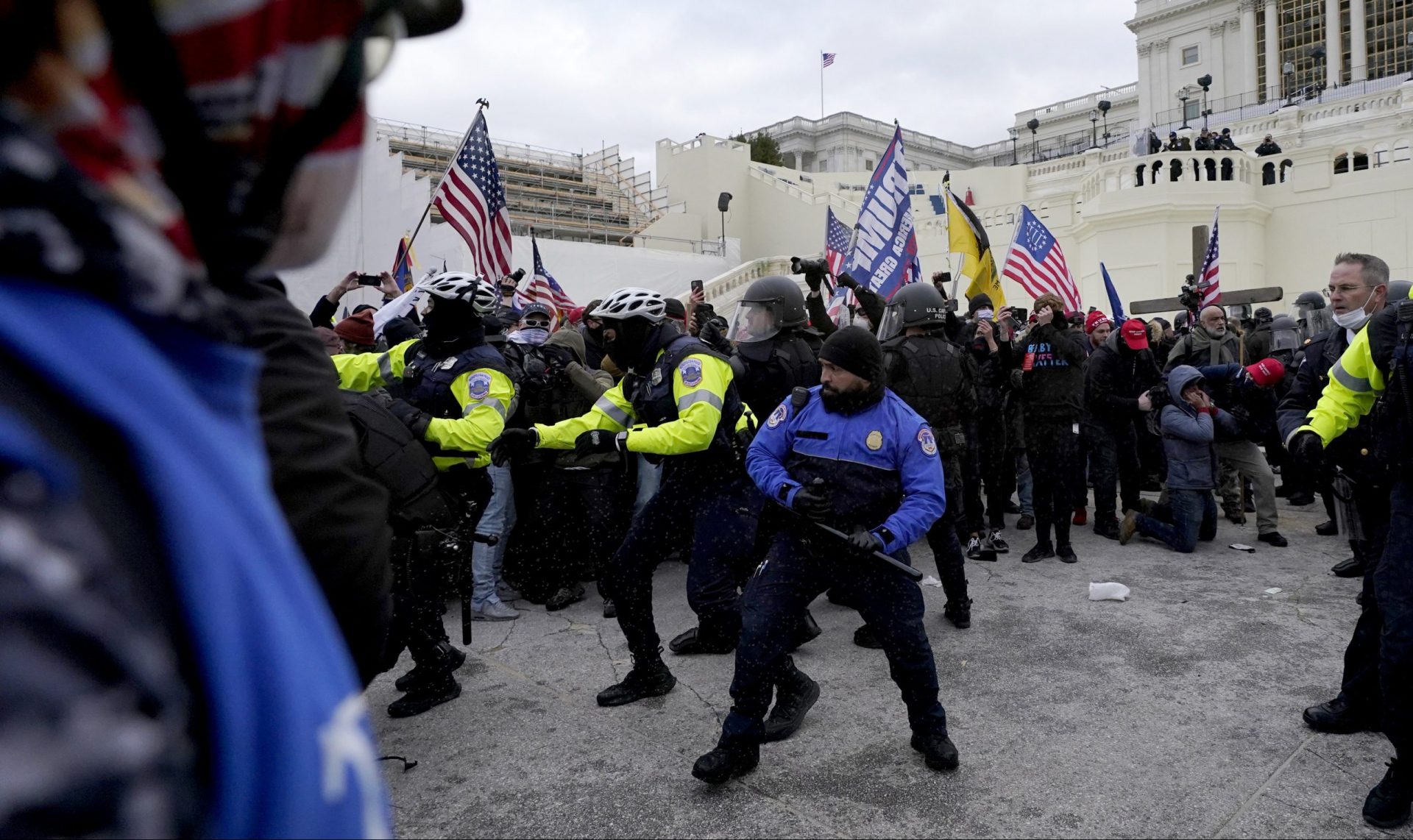
The FBI has released a substantial amount of information, including surveillance video, about the unidentified bomb-maker.
FBI screenshot / NPR

The FBI has released a substantial amount of information, including surveillance video, about the unidentified bomb-maker.
FBI screenshot / NPR

FBI screenshot / NPR
The FBI has released a substantial amount of information, including surveillance video, about the unidentified bomb-maker.
(Washington) — More than three months after the U.S. Capitol riot, a bomb-maker remains on the loose.
A majority of the public’s attention has been focused on the hundreds of people who have been charged for their role on Jan. 6. But the night before, someone committed a different crime: The person placed two explosive devices near the Capitol in Washington, D.C., and that person is still at large.
The FBI released a substantial amount of information in an attempt to drum up leads from the public, and the reward for information about the suspect is now $100,000.
Here’s what is known: The suspect was wearing a gray hooded sweatshirt, a COVID-19 mask and expensive sneakers — Nike Air Max Speed Turf with a distinctive yellow logo. Sometime between 7:30 and 8:30 p.m., the suspect placed one pipe bomb on a park bench near the headquarters of the Democratic National Committee and another behind the Republican National Committee headquarters.
Doug Kouns spent 22 years in the FBI and focused on counterterrorism after the Sept. 11 attacks, and he said that the suspect made a concerted effort to hide their identity. “You can see the person’s wearing gloves. They seem to be familiar with the area. They probably know there’s cameras here and there and have really just covered their tracks,” Kouns said.
The explosive devices the suspect made were rather generic: simple bombs made from 1-by-8-inch galvanized steel pipes — the kind plumbers use — with plastic kitchen timers mounted on top, the ones you spin around to set. The FBI said the explosive inside was homemade black powder, which can be a mix of just about anything that will ignite; typically it includes saltpeter, sulfur and gunpowder.
“What I think would be accurate to say, given the information we have, is this is a very hazardous device that could kill people,” said Barry Black, a retired FBI special agent and master bomb technician who helped investigate the 1995 Oklahoma City bombing.
The FBI is also using gait analysis, a technique used to identify someone by the way the person walks, hoping it will lead to a suspect. Agents have released surveillance video to see if someone in the public might recognize the suspect from the way he or she moves.

Julio Cortez / AP Photo
Police officers try to push back President Donald Trump supporters trying to break through a police barrier, Wednesday, Jan. 6, 2021, at the Capitol in Washington. The incident happened as Congress prepared to affirm President-elect Joe Biden’s victory, with thousands of people gathered to show their support for President Donald Trump and his claims of election fraud.
Dr. Mike Nirenberg wrote a textbook on gait analysis, and he reviewed the FBI video with NPR. “Look at how close their feet are to each other. … So that is a narrow base of gait,” he said, watching the suspect. “Immediately what you notice is the arm swing of the person on that left arm. … There isn’t a lot of rotation in the upper half of their body, their torso.”
The FBI is asking people with possible leads to contact it if they know of anyone who acted suspiciously in the time leading up to Jan. 5, purchased multiple kitchen timers without a good explanation or showed an unusual interest in explosives.
Despite all the resources that federal law enforcement has at its disposal, it has not yet been able to make an arrest in this case. “I would say it just takes time,” Black told NPR. “You know we’ve had investigations, bombing investigations … where it would be 10, 15, 20 years before someone was indicted.”
NPR’s Investigative and News Apps teams have published a database of everyone arrested so far in connection with the Capitol riot. This area of reporting is ongoing, and the database is being updated.
Loading…

Sometimes, your mornings are just too busy to catch the news beyond a headline or two. Don’t worry. The Morning Agenda has got your back. Each weekday morning, host Tim Lambert will keep you informed, amused, enlightened and up-to-date on what’s happening in central Pennsylvania and the rest of this great commonwealth.
The days of journalism’s one-way street of simply producing stories for the public have long been over. Now, it’s time to find better ways to interact with you and ensure we meet your high standards of what a credible media organization should be.